What is Monster Hunter?
With the recent release of Monster Hunter: World, interest in the previously niche monster hunting genre has exploded. Monster Hunter is nothing new and has inspired dozens of imitations for well over a decade. Yet with all the comparisons to relatively unrelated games and the introduction and refinement of obtuse or complicated gameplay aspects, Monster Hunter: World can be a daunting and incredibly heavy experience for the casual player. Diving head-first into the world of Monster Hunter may leave you a little disoriented - but fret not! This entry to the series is by far the most beginner-friendly, and with patience, you'll get hooked in no time.
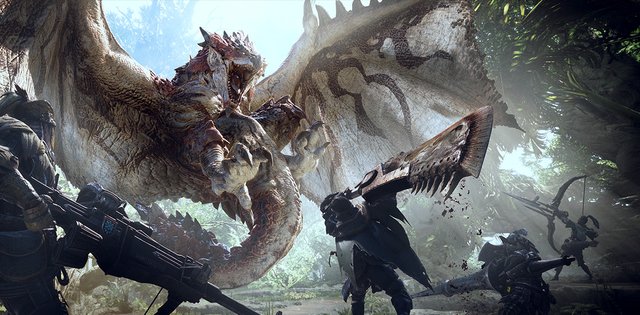
If you're a fan of rewarding, challenging albeit fair gameplay with near-infinite replayability and breath-taking scenery, then the world of Monster Hunter is for you. But if you're anxious about cannonballing into a potentially thousand-hour gaming journey, this will be your guide to dipping your toes into the MH whirlpool. So first: a little bit of history.
In the Age of Hack & Slash
Monster Hunter was conceptualized, developed and released by Capcom in 2004, at a time when the company wanted an array of games to focus on the Playstation 2's network functionality.

To prioritize multiplayer, much of the original Monster Hunter game had content that was primarily accessible online, geared towards being completed with 2-4 players in total. One of Monster Hunter's (2004) difficult final bosses, a medieval-style Elder Dragon named Fatalis, was in fact only available by connecting to the Internet for a special quest.
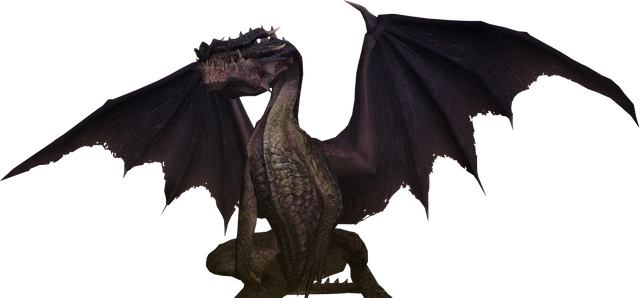
Yet long before players had the skill or equipment to tackle the mighty Fatalis, Monster Hunter established early on what it would be about: hunting and wearing monsters. Unique in its mastery of animation, the appeal behind Monster Hunter is its gameplay - simple in theory, yet masterful in execution. If you take away the contrivances of the era - including low graphics, terrible hitboxes, and obtuse crafting mechanics - then what is left is a game that presents satisfying combat, dissimilar to another popular Capcom series (Devil May Cry). Monster Hunter specializes in using animation cues to teach the player to look for openings between attacks, time their movements, and be patient in approaching a monster.
Every attack, both for the player and the monster, has a start-up animation, and an eventual recovery. Attacks that land create a certain amount of hitlag - a slowdown in the attacking animation's frames depending on the amount of damage produced by the attack. This hitlag creates the feeling of a "heavier" and more effective attack while hitting a more defensive part of the monster results in near zero hitlag, or even a bounce off its tough hide, teaching players where to hit and where not to hit without the inclusion of damage numbers or other intrusive features. In lieu of this, all monsters in the game must be fought without the customary HP bar, so that the only indication of how close a monster is to death is their behavior and scarred bodyparts.
The recovery in every attack teaches players to watch the monster's behavior and rewards patience over recklessness. A Rathalos rearing its head and leaning back is preparing to charge forward, while a Rathian will twist its body slightly before lashing out with its poisonous tail. A Deviljho will raise its leg up high before stomping down. A Rajang will jump to its feet and turn before unleashing a barrage of lighting from its maw. After each attack, the monster must take time to recover, shaking off the impact of a slam or returning to a neutral position after a bite. These openings give players enough time to land an attack or two and get out of the way before getting hit. At first, monsters may seem deceptively fast and aggressive, giving no apparent room for openings. But hunt after hunt, the player learns more about how the monster moves, learning to dance around it without fear of getting hit.

It sounds tedious, but the simplicity and fairness of the combat quickly overshadow the initial learning curve and makes Monster Hunter a game that evokes equal amounts of rage and passionate excitement. Each monster presents a unique challenge to the player, forcing them to react, read the movements of their prey, and learn how to dodge the many tricks the monster may have up its sleeve, lest they lose.
Faster weapons deal less damage and have less recovery time, while slower weapons are more powerful, but a missed attack can be costly to the player's efforts. This creates a balance between the game's many choices in weaponry, ranging from swift daggers to a larger-than-life Greatsword. Yet these awesome weapons and matching armors are not given for free - they stem from the series' primary gameplay loop, the addictive cycle that makes Monster Hunter what it is.
The Reward Loop
Eat, hunt, craft, repeat. Monster Hunter has changed plenty over the years, adding new mechanics and weapons, but the core gameplay has always remained the same. Players are introduced into the world of Monster Hunter as new hunters, pitted against increasingly threatening monsters, eventually facing one or two apex predators, and in turn becoming more accomplished both in-game and among real-life friends. Hunting one monster successfully leads to unlocking an assortment of weapons and armor craftable through monster drops.
A full set or an upgraded weapon may take a while to craft, as rare drops often force the player to grind the same monster a few times. Yet this almost never becomes tedious, as every hunt can lead to new and exciting things. And in turn, the copious hunting teaches the player more about their weapon of choice and gives them the opportunity to learn more about the monster.
As your gear improves, you face harder monsters. Their difficulty does not only come in the form of greater HP pools and stronger damage numbers but through trickier animations, unique fighting patterns, longer movelists, and other aggressive behavior. The game always remains the same: you hunt monsters, craft gear from their parts, and use it to hunt harder monsters. Yet beyond this core reward loop lies the true formula to Monster Hunter's success - the authenticity and variability of its monsters, and the complexity of the weapons you use to face them.
The game's sheer content is bolstered by a ranking system that has players facing the same monsters, yet with updated movesets and more ferocious behavior. All hunters start in Low Rank, gaining Hunter Ranks for facing certain monsters, until graduating into High Rank, and in some games, achieving the prestigious G-Rank. Early High Rank and G-Rank have many of the same monsters as early Low Rank, yet they become increasingly difficult, evolving with each rank-up.
There are no level-up screens, no stat allocations, no special moves gained through more hunting. While your gear improves to match the health and damage output of your opposing monsters, the main thing you're upgrading is your own skill as a player - and more specifically, your skill with your chosen weapon.
14 Weapons, Countless Monsters
Monster Hunter can be classified as an Action RPG, yet it lacks any system of stats, attributes or classes. It does, however, have armor skills, items, and weapons. You can choose to wear any combination of armor and pick any weapon with a singular character, and there is no need to specialize in a single weapon -- yet for newcomers, sticking to one weapon after trying them all can help you focus on learning the monster instead of struggling with the differences in movesets from weapon to weapon.
Monster Hunter's weapons are about as complex as fighting game characters, each with their own specializations, pros, and cons, yet all geared towards offense in one way or another. The PS2 original only came with seven weapons in total, and the series eventually added to the original roster, reaching today's count of 14.
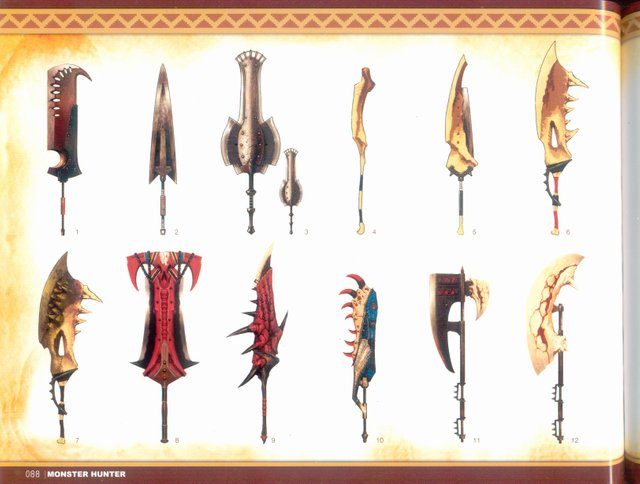
All melee weapons must deal with a mechanic called sharpness, which modifies the damage output of the weapon and its ability to cut through heavily-armored monster parts. Higher sharpness means you're less likely to bounce and you do more damage -- but maintaining your sharpness means applying a whetstone to your weapon multiple times throughout a hunt.
Ranged weapons, on the other hand, rely on ammunition and arrow coatings to deal maximum damage. Ranged weapons play entirely different to melee weapons, and require a better understanding of monster hitzones (the distribution of hidden defense stats on each bodypart), critical distance (a ranged damage modifier based on the distance between the hunter and the monster), and ammo types to use effectively, making them quite complicated and difficult to use for beginners, while providing a different perspective for more experienced players. Among melee weapons, some are simpler and easier to begin with (such as the Greatsword, Dual Blades , and the Hammer), while others come with a more complex movepool and secondary features that require micro-management (like the Charge Blade, Gunlance, and Hunting Horn). Visit the Training Room of Monster Hunter: World to learn a little bit about each weapon, and figure out what suits you best.
You don't have to limit yourself to any one weapon or use them all to get your fill of the Monster Hunter experience. Play with the ones you like, get better at the ones you love, and find a playstyle to match your own personal taste and pace. Although some weapons are "beginner friendly", each weapon takes countless hours to "master" and use with maximum proficiency. An expert Greatsword user must spend as much time becoming perfectly accustomed to each monster as an expert Charge Blade or Heavy Bowgun user.
Monster Hunter Now
The release of Monster Hunter: World marks a new age in the monster hunting genre in the West, and shows that the series has reached the tipping point in popularity necessary for Capcom to push for a major (and risky) home console release. New features, voice acting, high graphical fidelity and an overhaul of many complicated or obtuse aspects, including the beginner-unfriendly armor skill system of older Monster Hunter games, sets World apart from the rest of the series.
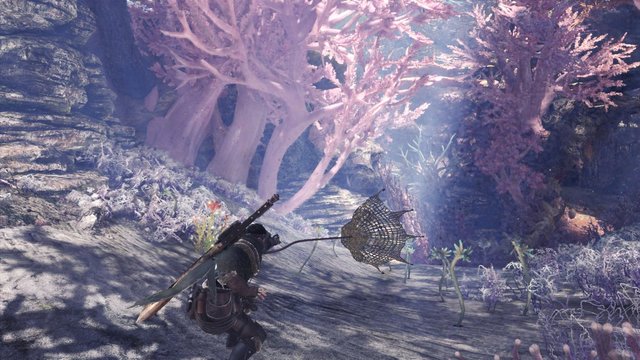
While the move from home consoles to handhelds did not hurt the series' popularity in Japan, where handheld gaming reigns supreme and Monster Hunter enjoys a massive nationwide fandom, it did hurt the series' growth in the West. Yet the reception of Monster Hunter 4 Ultimate and Monster Hunter Generations showed Capcom that the demand for quality Monster Hunter games was alive and growing, enough to warrant a major push.
Only time will tell whether this risk will lead to more Monster Hunter in the future, or whether the gameplay loop and end-game difficulty will be too off-putting to casual audiences, relegating Monster Hunter back to being a niche game in the West.
Monster Hunter: World was released on PS4 and Xbox One on January 26, 2018, and is slated for a PC release later in the year. Get MHW today!
Note: I've got two major posts for new players looking for a guide to the weapons of Monster Hunter: World! Check them out here and here.
I bow to the well that is your knowledge. - consider me impressed.
Thank you! I do try.
amazing best post for gamer @jamthewriter
Thank you! Expect more content soon :)
lovely gaming collection @jamthewriter
Hey! Are you back to Steemit? Back as in to blog regularly? The depth of your review is amazing! I have not seen a better one yet. I want to read you everyday.
I am! I'm planning to write up a post on the melee weapon types tomorrow, and focus on ranged weapons next. Then I'll go into a few mechanics, first rehashing the old ones, then going into new ones! I'm going to play it by ear after that, but I'd love to help people get a solid overview of just how deep this game can get, and the amount of love put into it.
That sounds like exciting times ahead. I am all buckled up, pop corn in hand. Yay... I am stalking your blog already. Keep it coming, buddy.
This is the most addicting game I've played in a while. Great article btw.
great post:)
Thank you! :)
Well presented and very well written.
Thank you for the kind words! I plan to keep up the quality if possible :)
Great summary! I can't wait for it to release on the PC though. I am not much of a Console gamer.
The PC release will be amazing, no doubt. Last I checked, Capcom stated they were utilizing a special team to ensure the port would do the game justice, which is why it'll take so long. I generally have more friends on PC than on consoles, so when it does release, I'll be nabbing another copy - I do recommend giving it a try on the controller though. Can't quite imagine Monster Hunter on keyboard and mouse.
I do own a controller, steam and Rumble. Thanks for the Tip. I wil certainly give it a try.
Also, I hope I can play it with steam Link. That way I can relax on the couch! :D
Great
Good post, and I'll echo the points made elsewhere. Too many posts around at the moment that are just microblogging. No depth at all. Good to see a gamer who wants to go deep on a topic.
Thanks for your review, I can not wait to spend countless hours grinding with friends and not look at crypto every second of the day :)
Sure thing! I'll have some more content coming for newcomers. Be sure to check by or ask me something in the comments if you need a tip!
https://steemit.com/game/@vimaltri/this-is-what-super-mario-looks-at-380000-frames-per-seconds